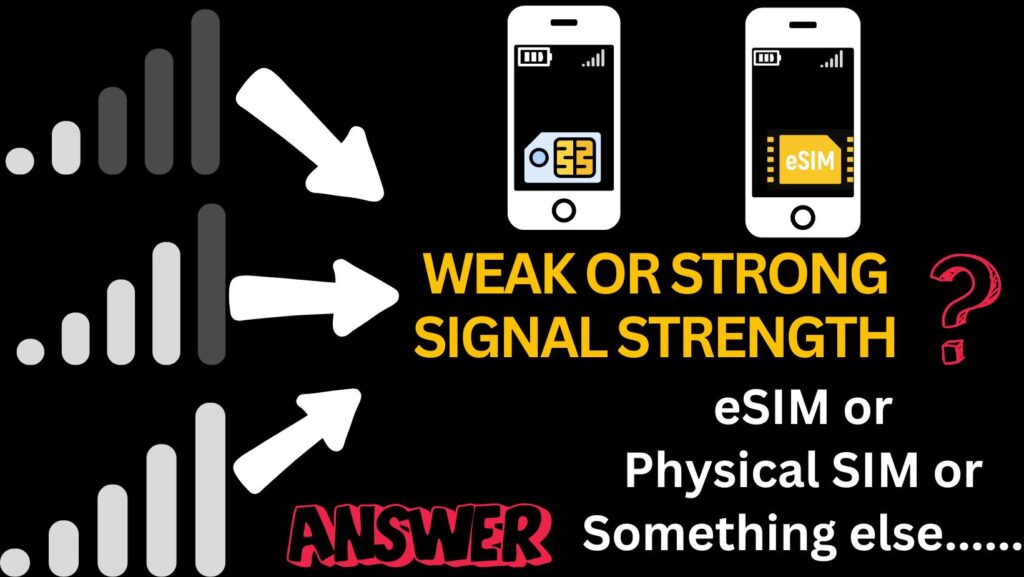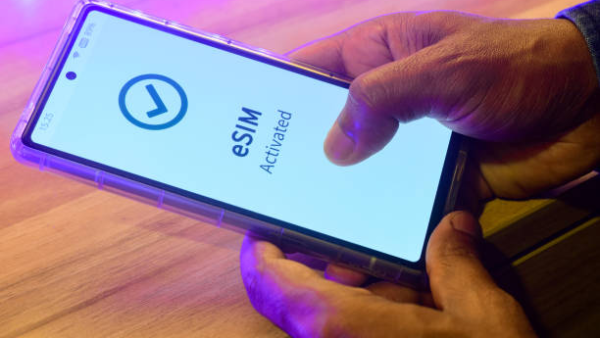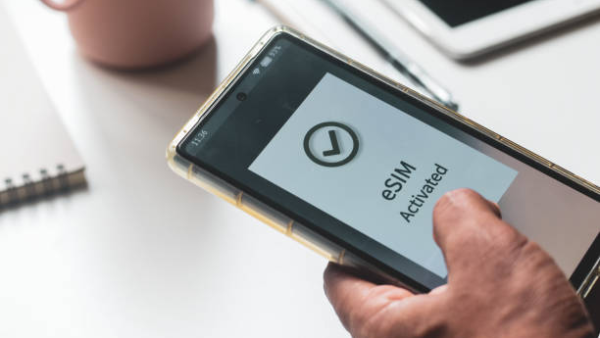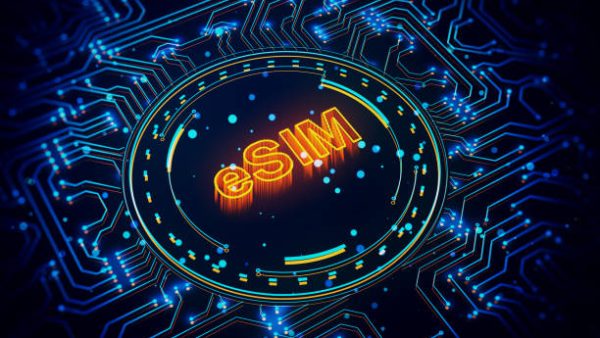Understanding signal strength

- Both eSIM and Physical SIM cards rely on existing mobile network infrastructure for signal strength.
- Signal reception can vary based on factors such as network coverage, tower proximity, and congestion levels.
- In areas with robust network infrastructure, users of both eSIM and Physical SIM cards can expect reliable signal strength.
- Signal fluctuations or weak reception may occur in remote or congested areas, regardless of the SIM type.
Answering the question from Telecom network infrastructure perspective
eSIM versus Physical SIM Signal Strength parity
Mobile network infrastructure heavily influences both eSIM and physical SIM signal strengths, making them generally similar, if not identical. Factors such as population density in specific areas, the proximity of mobile towers, and the type of network (e.g., 3G, 4G, or 5G) affect the signal quality experienced by users, but they impact both eSIM and physical SIM comparably.
Does eSIM affect my network speed?
Network speed is not influenced by the type of SIM card used, so eSIM does not affect network speed.
Does eSIM work without signal?
Neither eSIM nor physical SIM can function without a signal.
Does eSIM provide better Network quality?
Both eSIM and physical SIM provide very similar network quality under the same mobile network infrastructure.
Speed comparison and does eSIM have same coverage?
Under the same mobile network infrastructure, eSIM speed is on par with or even better than physical SIM speed. Physical sim and eSIM both rely on the same cellular network infrastructure to provide signal coverage.However, not all networks support eSIM but generally Internation Data eSIM sold by most players mention the preferred network on which eSIM works the best. Also do check the eSIM compatible device list before thinking of buying eSIM Data plans.

Answering the question from Device or eSIM/Physical SIM technology perspective
Form and design
Physical SIM cards are detachable chips inserted into a device’s SIM card slot, whereas eSIMs are integrated directly into the device’s hardware. Physical SIM cards may sometimes suffer from poor contact with the device’s reader, potentially leading to signal issues. Conversely, eSIMs lack physical contacts that can degrade over time, potentially offering more consistent connectivity.
SIM card reader and antenna configuration
Device antenna design can significantly affect signal strength. Devices with eSIMs can have more room for antenna optimization, potentially resulting in superior signal reception compared to those with physical SIM card slots. Physical SIM cards are inserted into a SIM card reader, and the quality of this reader, as well as the mechanism securing the SIM card, can affect signal strength.
Coverage and compatibility
While both eSIMs and physical SIM cards can connect to the same networks, eSIM support might be constrained by carrier or device compatibility issues. This limitation could indirectly impact signal strength if eSIMs are not supported on certain networks or in specific regions.
Interference
Physical SIM cards may cause interference with other device components due to their physical presence and electrical connections. eSIMs, being integrated into the device’s hardware, could mitigate such interference concerns. All these four parameters are beyond the control/understanding of average users but eSIMs more or less qre better in atleast three aspects.

Conclusion and our take
When considering signal strength, both eSIM and Physical SIM cards primarily rely on the existing network infrastructure they use. Both types of SIM cards use radio technology to connect to mobile networks and can provide reliable connectivity in areas with strong network coverage. Therefore, for all practical purposes, there is no measurable difference between the signal strength you receive from a traditional SIM card and eSIM.
Geographical location and usage patterns
Our recommendation is to evaluate your usage patterns and geographic locations where you’ll be using your device most frequently. If you travel often or need seamless connectivity in various locations, eSIM’s flexibility and ease of use can be advantageous. However, if you primarily stay in areas with reliable network coverage, a Physical SIM card may suffice.
Mobile network infrastructure
Ultimately, signal strength depends on the quality of the mobile network infrastructure in your area. Choose the SIM card type that aligns with your connectivity needs and offers the best coverage based on your location.
eSIM is the way forward
Remember, regardless of the SIM type, signal strength can vary, so it’s essential to choose a reputable network provider with strong coverage in your area for optimal connectivity although bear in mind Digital eSIMs are increasingly getting adopted by both end users and operators. Further check our blog, if you want to know what effects your data speed on a foreign trip. If you have any queries on this topic or any other related to eSIM reach us at admin@hubbingecom.com
You may like reading similar article








Leave a comment